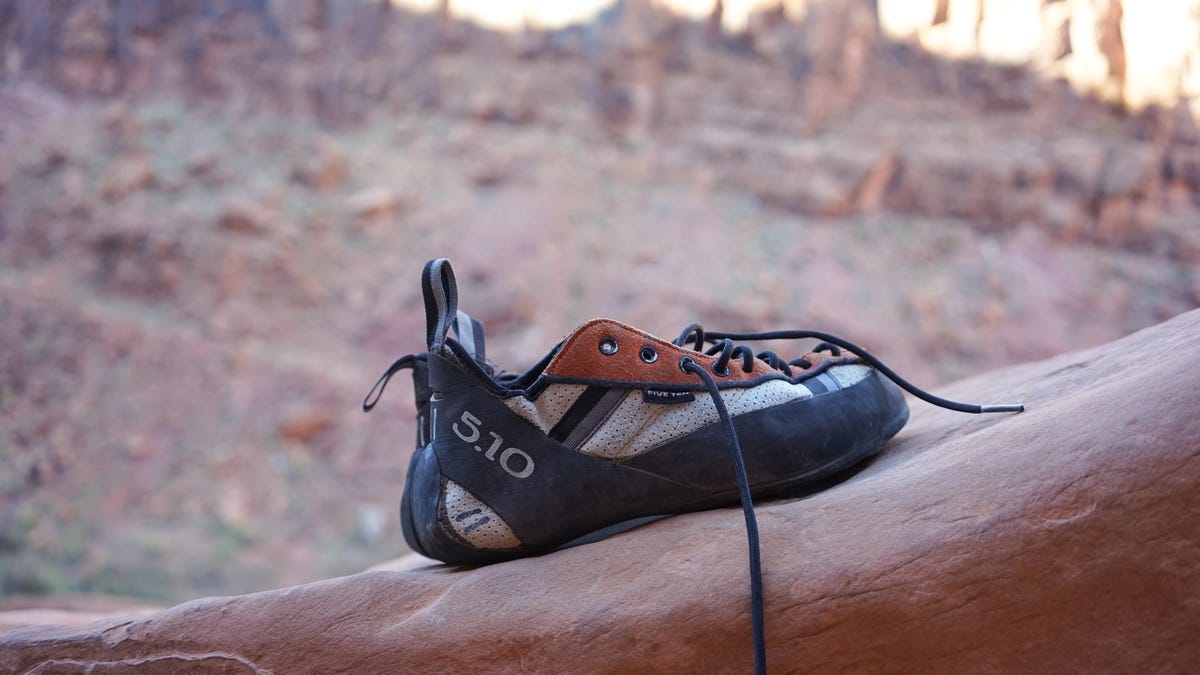Knot kidding: Science explains why shoelaces come untied
The complex forces exerted on our laces act like an invisible hand out to trip us up, a finding that could solve mysteries beyond our feet.
Science has finally answered a burning question asked by people like me who wear sneakers: why the heck do these shoelaces keep coming untied?
Mechanical engineers from UC Berkeley studied the problem in a series of experiments that involved filming one of their colleagues with a slow-motion camera as she ran on a treadmill. They discovered that the dynamic forces acting upon laces laces while we jog or walk are a bit like an invisible hand undoing the knot. It's as if physics is punking us a little with every step.
"The forces that cause this are not from a person pulling on the free end, but from the inertial forces of the leg swinging back and forth while the knot is loosened from the shoe repeatedly striking the ground," study co-author and graduate student Christine Gregg said in a statement. She was also the research subject who laced up her minimalist running shoes for the treadmill run.
OK, so it's annoying your laces keep coming untied, but why should science care? The researchers say understanding the mechanics of knots and how they fail could be useful far beyond simply taking the dog for a jog.
"When you talk about knotted structures, if you can start to understand the shoelace, then you can apply it to other things, like DNA or microstructures, that fail under dynamic forces," said Christopher Daily-Diamond, a graduate student at Berkeley and co-author of a study that will appear Wednesday in the journal Proceedings of the Royal Society A. "This is the first step toward understanding why certain knots are better than others, which no one has really done."
Here's how shoelace knots come undone, according to the paper. When you run, your foot hits the ground with a force seven times harder than the force of gravity alone. All that impact makes the knot in your laces stretch and then relax while the action of swinging your leg pulls on the end of your laces. In other words, the very action you lace up for also conspires to untie them. The researchers found these forces could lead to the failure of a knot in just a few strides.
Of course, we don't all have to re-tie our shoelaces every three steps. The researchers found that different knot-tying techniques, types of laces and levels of knot tightness all factor into how long it takes shoelaces to come undone. A really tight double knot usually gets me through a run, for example.
"Some laces might be better than others for tying knots, but the fundamental mechanics causing them to fail is the same, we believe," Gregg said. "The interesting thing about this mechanism is that your laces can be fine for a really long time, and it's not until you get one little bit of motion to cause loosening that starts this avalanche effect leading to knot failure."
Sooner or later, things -- or at least the knot in our shoelaces -- fall apart, the researchers seem to be saying. But I have one pair of shoes I slip on and off without ever touching the knot in the laces that's been there for many months now. Have I found, uh, a loophole in the forces that inevitably act to untie my shoes?
Probably not, it seems, because I use those shoes almost solely for biking, which means they don't get that ground-stomping action seen while running.
"You really need both the impulsive force at the base of the knot and you need the pulling forces of the free ends and the loops," Daily-Diamond said. "You can't seem to get knot failure without both."
OK, so now that we've maybe solved the mystery of ineffective shoelaces, hopefully it was worth all the scientific effort.
If the research helps unlock new insights into DNA, perhaps I don't have to feel that I wasted all those countless minutes tying and re-tying my laces over the years while continuing to wait for someone to make a decent Velcro trail running shoe.
Crowd Control: A crowdsourced science fiction novel written by CNET readers.
CNET en Español: Get all your tech news and reviews in Spanish.


